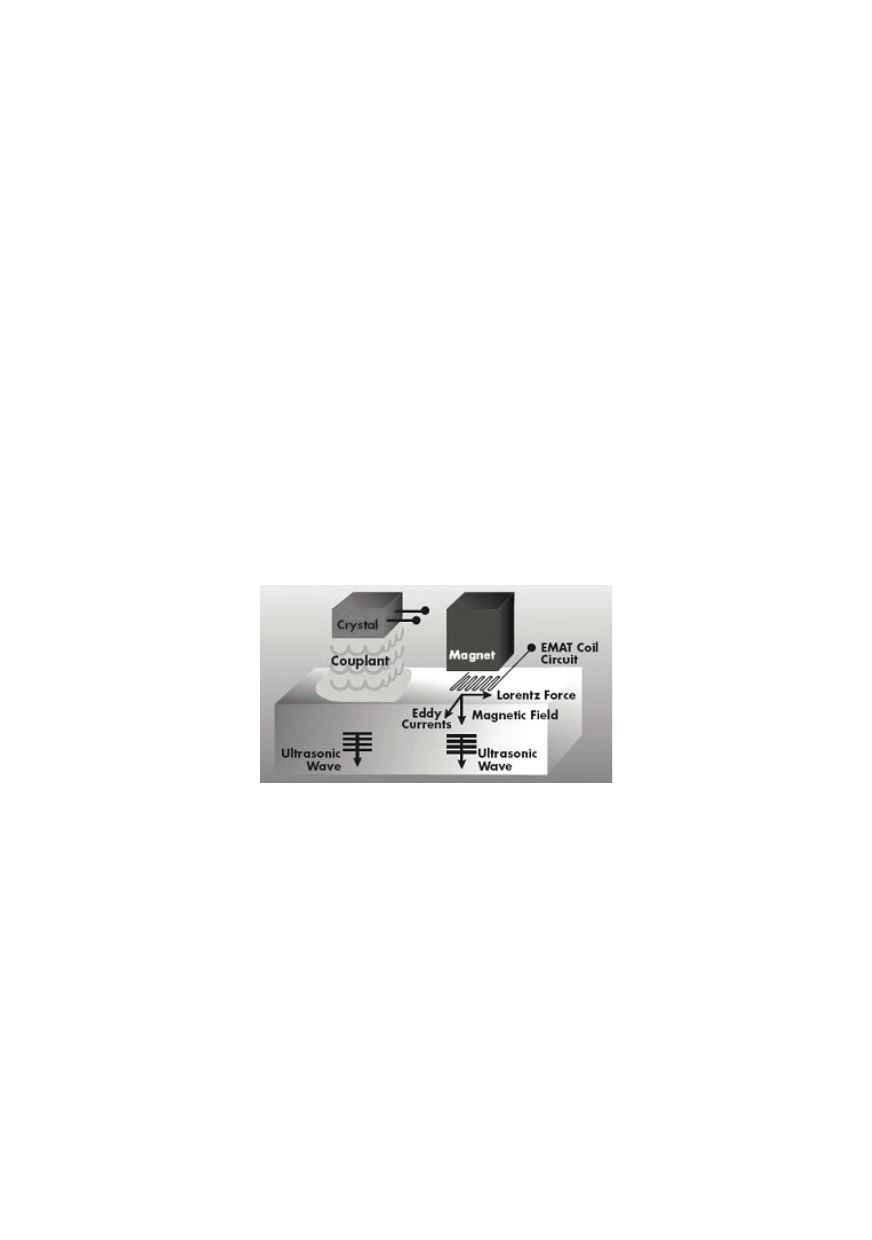

249
expensive dual frequency GPS receiver but its sampling rate can reach 100 Hz. But, there
is problem in achieving a cm RTK GPS positioning with single frequency GPS receivers.
3. APPLICATION OF NEW NON-DESTRUCTIVE TESTING TECHNIQUES
Several new developed non-destructive-testing methods are now in use for covering
extended demands regarding flaws and damages detection.
3.1. Contactless ultrasonic method
For solving the problem of surface state effect on NDT results the contactless ultra-
sonic (UT) procedure is developed. The influence of the surface condition on UT can be
described as the echo amplitude changing with the probe replacement over the surface. It
is expressed as the sensitivity variation and it may amount a couple of dB, thus the flaw
size can be wrong estimated dependent on surface preparation. For that the flaw estima-
tion becomes uncertain and greater flaws can be estimated as acceptable. One way to
avoid the problem is surface preparation before UT, in accordance with recommended
procedures, the second is the use of water jet or other more dense media, like a thin layer
of grease, for improving acoustical contact between the ultrasonic probe and test surface.
For these reasons great attention is paid to the development of portable contactless
ultrasonic devices based on the electro-magnetic acoustic transduction. The problem can
be solved using contactless, hand-held probes, Electromagnetic Acoustic Transducer
(EMAT). This new innovative inspection technique is already accepting in many
industries. A comparison of piezoelectric UT and EMAT device is given in Fig. 9.
Figure 9: A comparison of piezoelectric UT (PET) and EMAT UT
The basic structure of an EMAT consists of a magnet (a permanent or an electro-
magnet) and a meander shaped wire, located above the metal surface in the magnetic
field, as presented in Fig. 9. In this case, the eddy currents are periodic and flow in a
uniform magnetic field. The spacing between adjacent wires makes this type of coil
particularly sensitive to waves of length twice the spacing between the wires. Here, the
eddy currents under the coil find themselves subjected to a periodic magnetic field. This
form of periodic magnetic field and uniform eddy current generates or detects shear
horizontal (SH) waves whose wavelengths are twice the width of the individual magnets.
The physical principles are based on the same electromagnetic induction processes that
govern electrical motors and generators. A wire carrying an alternating current and held
close to a conductor will induce eddy-currents in the conductor. If a large magnetic field
also floods the area of the eddy-current, Lorentz forces are generated in the conducting
surface by electric motor action and these launch acoustic waves into the conductor at the
same frequency as the current that drives the wire. The acting Lorentz force is the vector


















